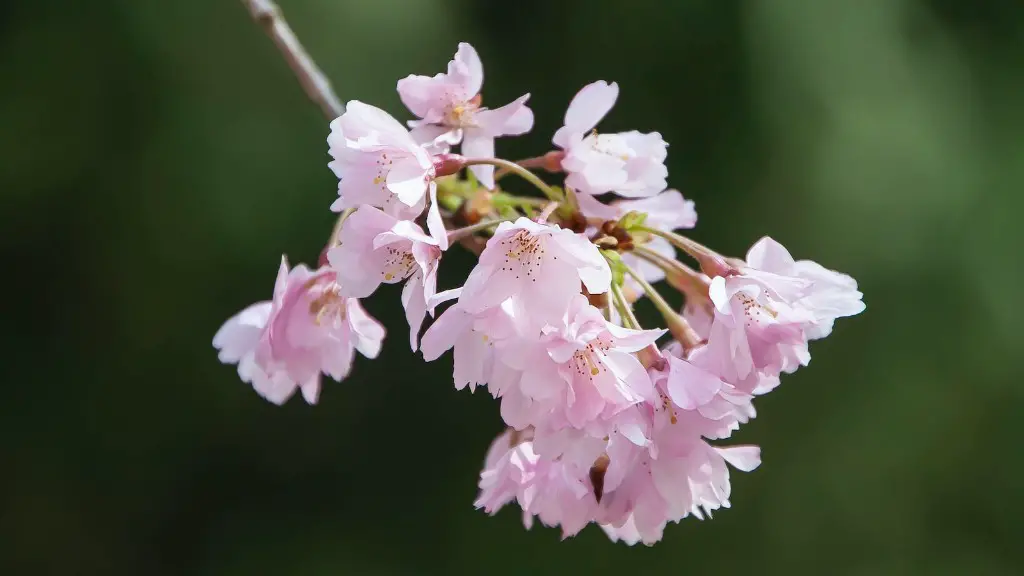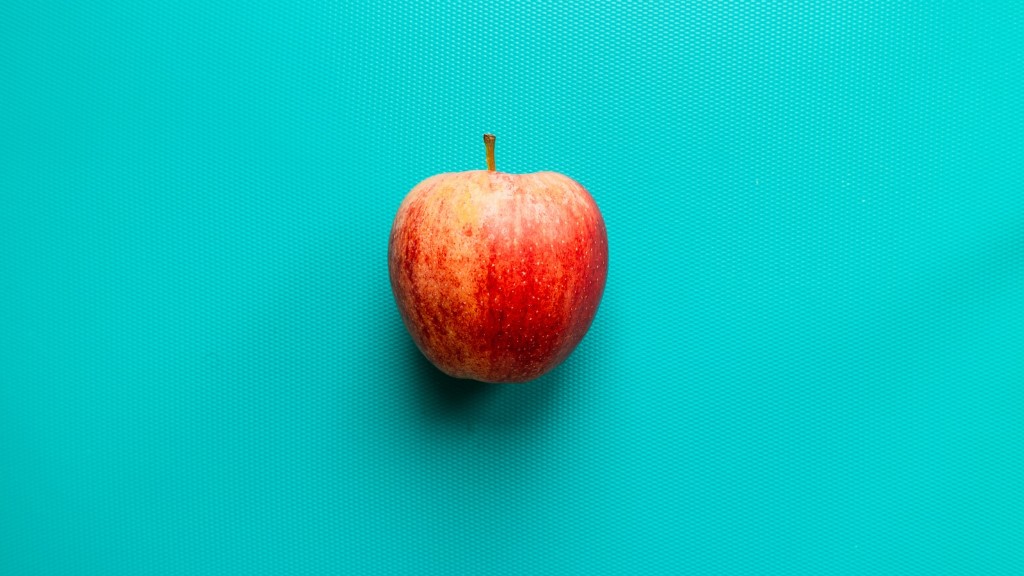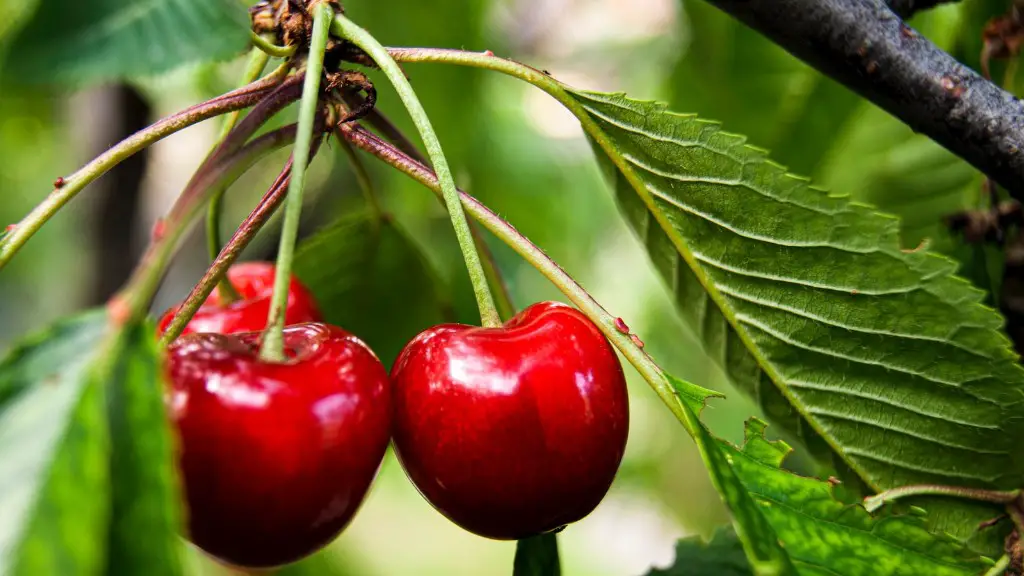What better way to celebrate the sweetness of life than planting a cherry tree? Cherries are a deliciously sweet and juicy treat, and the good news is – cherry trees are easy to grow in the right climates and just need the right care. They’re also multi-purpose plants, since they provide delicious fruits, fragrant flowers, and unique, elegant foliage. But when is the best time to plant a cherry tree?
The best time to plant a cherry tree depends largely on where you live. In cooler climates, October or November is the best time to plant. The trees can get a full root system established before the harsh winter weather sets in. Trees planted in the autumn months have the best chance of surviving their first year of growth. Planting too early may enable spring frosts to damage flowers, buds and shoots.
In warmer climates, March is often the best time for planting a cherry tree. Warmer climates usually have an easier time adjusting to faster growth rates and root establishment can occur throughout the spring and summer months. Regardless of your location, when planting, make sure to choose a type of cherry tree suited to the climate and soil type.
Regardless of when you plant, there’s preparation that must be taken before your tree even reaches the ground. Dig a hole two to three times wider than the root ball, and it needs to be almost as deep. Lime should be added to the soil, since cherry trees prefer alkaline soil with a pH of 6.5 to 7.0. Place a few stakes in the soil near your newly planted tree to help it stay in an upright position if necessary, removing them after the tree is established.
After you’ve planted your new cherry tree, water it well. Keep the tree moist but do not waterlog it. Overwatering will leach nutrients from the soil and may damage the tree’s health. Mulch the base of the tree with organic material such as bark, straw or grass cuttings, which help the soil retain moisture and provide additional nutrients.
Fertilizing is also key in helping your tree reach its full potential. Apply a balanced fertilizer to the roots of your tree early in the spring season. Stressful conditions such as heat and drought, along with vitamin and mineral deficiencies, can affect the growth rates and fruit yields of your cherry tree.
Pruning is an essential part of tree care and will encourage more plentiful harvests. Pruning should typically be done during the winter months, but duration and frequency depend on the type of tree and the location. Seasonally appropriate pruning techniques will help encourage more and larger fruits each year and maximize the potential of your cherry tree.
Harvesting Your Cherry Tree
When your cherry tree is in full fruit, it is important to check the tree regularly. Ripe fruits may drop and be ruined if not collected quickly. Look for ideal color and texture changes, and be sure to wear gloves when harvesting cherry tree fruits, as ripe fruit is soft and can more easily be smeared than other fruit. The best way to harvest cherries is to use a pair of scissors and cut off individual fruit stalks, leaving large stems and leaves on the tree.
Also, when harvesting, try not to leave any ripe fruits on the tree to be attacked by birds or other pests. Harvesting cherry tree fruits can be time consuming, but the reward is worth it. Fill your basket with sweet, juicy cherries for yourself or to share with family and friends.
Storing and Enjoying Your Cherries
Cherry fruits can be stored for long periods of time due to their natural antifungal properties. Storing fruit at a low temperature will also slow down the ripening process. Be sure to store cherries away from direct sunlight as this will cause them to degrade quicker. Try freezing cherries too, as freezing cherries helps to preserve their flavor, texture, and nutritional content.
When it comes to enjoying the bounty of your cherry tree, cherries offer a wide variety of uses. Bite into a juicy cherry straight off the tree or use them in jams, jellies, and preserves. Of course, cherries are also delicious in pies, cobblers, and other desserts. The options are endless.
Pests and Diseases
Cherry trees are generally strong and healthy, but are prone to certain diseases and pests, so it is important to be familiar with the common ailments to protect your tree. Fireblight, an infectious disease that causes the tree to have a blighted appearance. It is important to prune affected branches to stop the spread of the disease. To avoid fire blight, be sure to select healthy cherries when transplanting and do not over-fertilize or overwater the tree.
Aphids and caterpillars are the most common pests for cherry trees and can be easily controlled with common insecticides. However, a natural method to keep pests away is to attract beneficial insects such as ladybugs, lacewings, and predatory mites that feed on the pests.
It is also important to watch out for birds, which can take a huge toll when it comes to eating cherries. A sheet or net strung around the cherry tree will make it more difficult for birds to land and snatch the fruit from the branches. Scarecrows and wind chimes may also be helpful in discouraging feathered friends.
When Weather Is a Factor
The weather also plays a role in how successful your cherry tree is. Low temperatures near or below -22.2°C (zero °F) can damage the flowers, buds and shoots, while hot, dry winds can cause the blossoms to dry out and suffer drought stress which will reduce the yield of that particular year’s fruit harvest. Rainfall at the wrong time can cause cracking in the cherries making them difficult to harvest and not good for shipping.
In areas where late frosts can cause damage, consider covering the tree’s flowers with a plastic sheet on cold nights to protect the blooms. Also, a soaker hose can help to keep the soil around your tree well-hydrated in times of drought.
Protecting Your Cherry Tree
You can protect your cherry tree from a variety of environmental hazards. Plant your tree on high ground so it stays dry and safe from flooding, and use windbreaks like shrubs or evergreens to shield your tree from strong winter winds. Additionally, make sure the tree is planted in a location that receives full sun and away from any large buildings that could block sunlight.
Finally, be proactive and inspect the tree regularly throughout the year. Watch out for any spots, discolorations or weak branches and take immediate action if you notice any problems.
Conclusion and Summary
When it comes to planting a cherry tree, timing, preparation and care are key. Choosing the right soil and providing adequate moisture and light will ensure your tree gets off to a strong start. Regular pruning and fertilizing will help the tree reach its full potential and yield plenty of fruit.
Pay extra care to protect your tree from weather risks, pests, and diseases. And, of course, check in on the tree from time to time to ensure it is getting enough nutrients, moisture and light. With the right attention and care, your cherry tree will bear delicious fruit for years to come.





